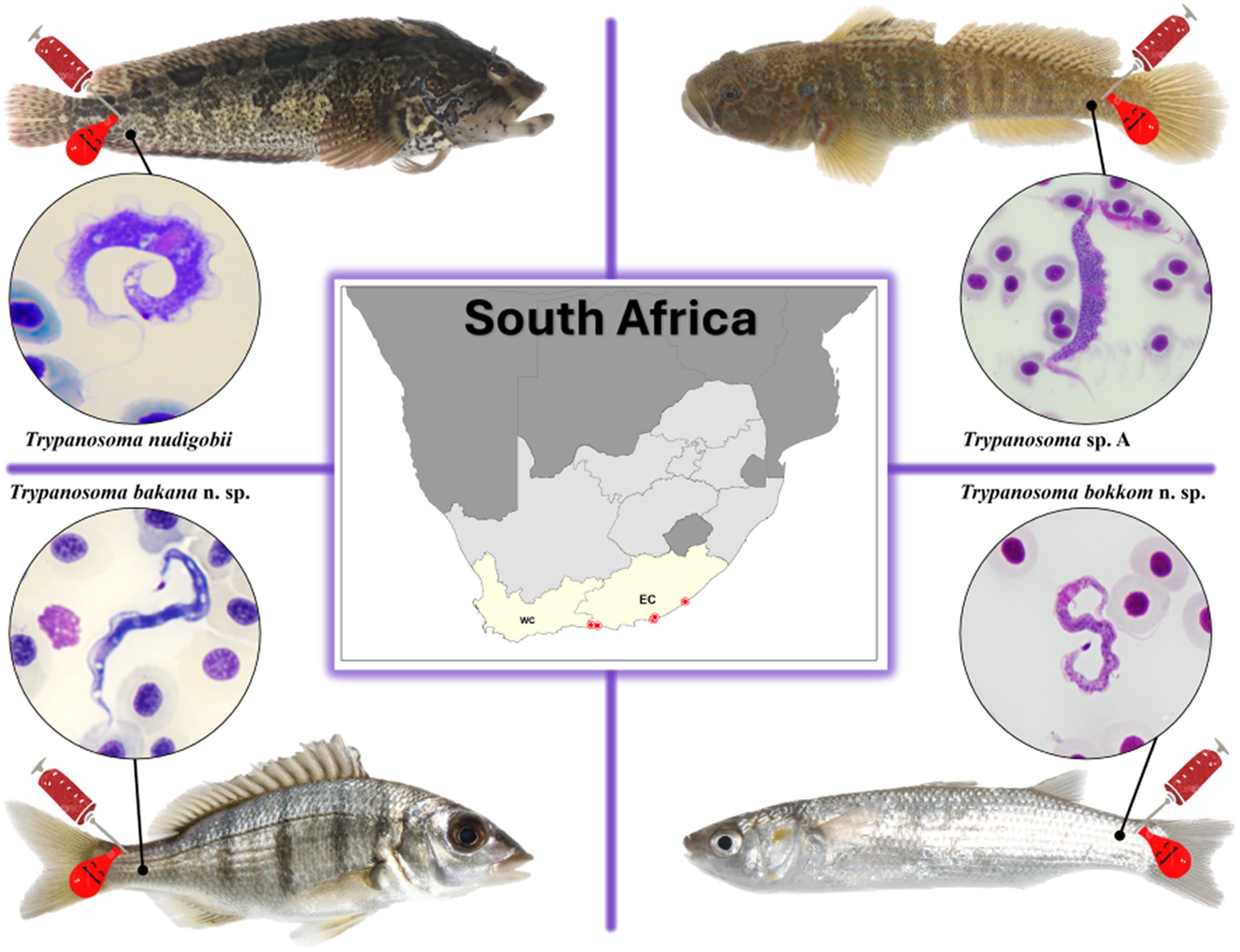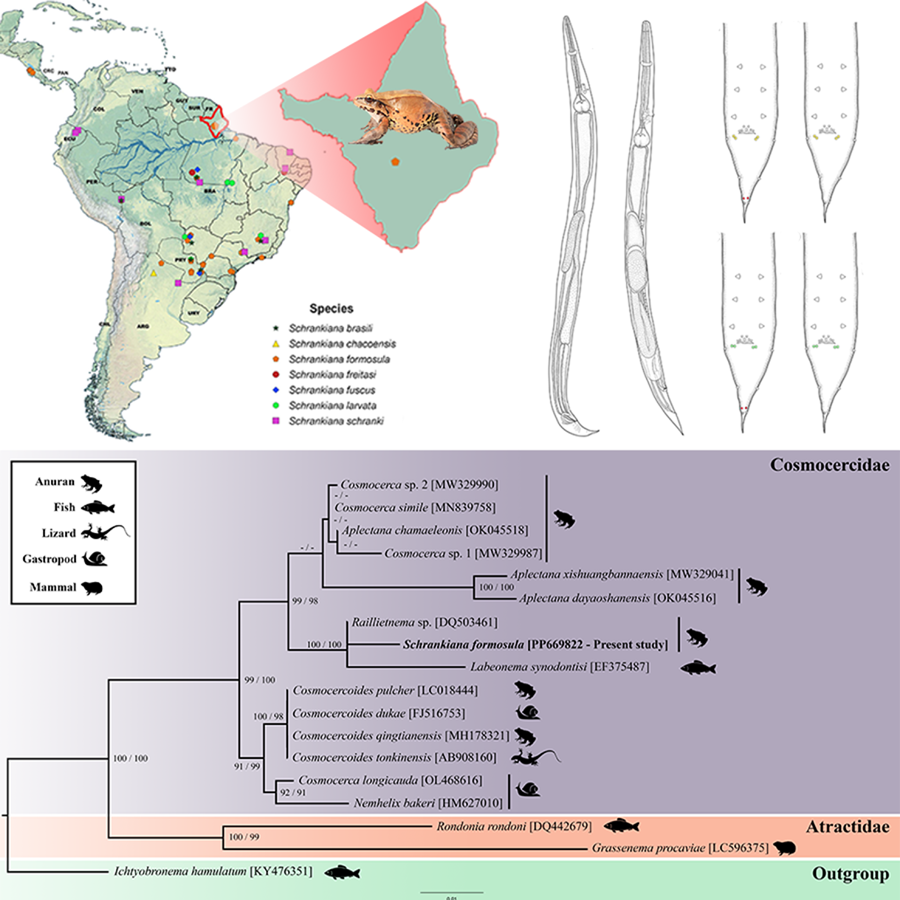January - April 2025
The Parasitology editors shortlisted 4 graphical abstracts from articles published in January - April 2025.
The winner with the most votes on X was C. Le Roux et al. from the article:
Abstract: The genus Trypanosoma Gruby, 1843 encompasses unique, flagellate haemoparasites infecting all vertebrate classes globally (excluding Antarctica). While trypanosomes in terrestrial mammals are well-studied due to their medical and veterinary significance, those in fishes remain largely unexplored, with limited data on their life cycles and ecological roles. Furthermore, the phylogenetic relationships of numerous aquatic species are unresolved. This gap is notable in South Africa, a region with high marine fish biodiversity, yet only 2 documented marine trypanosome species, 1 in teleosts and 1 in elasmobranchs are known. Our research aims to bridge this knowledge gap for marine fish trypanosomes along South Africa’s southern coast. Blood samples were collected from 246 fishes spanning 23 species at Chintsa East, Tsitsikamma (Garden Route National Park), Boknes, Kariega River Estuary and Groot River West Estuary from 2020 to 2023. Giemsa-stained blood smears were screened for trypanosomes, which were morphologically characterized. Molecular analyses targeting the 18S rRNA gene region were conducted on blood samples positive for trypanosomes. Combined morphological and molecular evidence identified 4 Trypanosoma species: 1 known species, Trypanosoma nudigobii from the klipfish (Clinus superciliosus) and 3 new species: Trypanosoma sp. A from the prison goby (Caffrogobius gilchristi), Trypanosoma bakana n. sp. from the white steenbras (Lithognathus lithognathus) and Trypanosoma bokkom n. sp. from 5 mullet species [the grooved mullet (Chelon dumerili), South African mullet (Chelon richardsonii), striped mullet (Chelon tricuspidens), fl athead grey mullet (Mugil cephalus) and the freshwater mullet (Pseudomyxus capensis)].
September - December 2024
The Parasitology editors shortlisted 4 graphical abstracts from articles published in September - December 2024.
The winner with the most votes on X was: Adriano José Silva Félix at al. from the article:
Abstract: Schrankiana are gastrointestinal parasites of anurans, distributed throughout Central and South America. Schrankiana formosula and Schrankiana inconspicata are some of the most commonly reported species parasitising anurans from Brazil, and the morphological differences between them are unclear. In the present study, we redescribed S. formosula based on a re-examination of type series and newly collected material from the frog Leptodactylus pentadactylus in the state of Amapá, Brazil. Additionally, we re-examined the type series of S. inconspicata, and propose it as a junior synonym of S. formosula. We provide detailed morphological and morphometric data with intraspecific variation analyses and new molecular data for S. formosula. In the present phylogeny, S. formosula formed a well-supported clade with Raillietnema sp. and Labeonema synodontisi. Based on molecular phylogenetic analyses and some morphological similarities, our findings support the hypothesis that Schrankiana is a member of the family Cosmocercidae, not Atractidae. Additionally, we provide the first ultrastructural descriptions of S. formosula, and establish the species' phylogenetic position from the Cosmocercidae.


